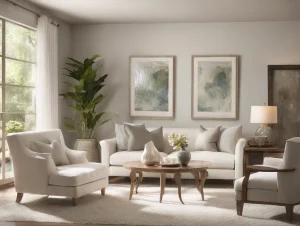There’s something endearing about small spaces. They evoke a sense of coziness, intimacy, and charm that larger rooms often lack. When it comes to dining areas, small spaces can present both a challenge and an opportunity. Over the years, I’ve come to appreciate the unique character and potential of compact dining areas. Today, I’d like to share some reflections on how to make the most of a small dining area, drawing from my own experiences and some practical tips that have proven effective.
Embrace the Coziness
One of the first things to realize about a small dining area is that it naturally lends itself to a cozy atmosphere. Instead of seeing the limited space as a constraint, embrace it as an opportunity to create a warm, inviting environment. Think of it as a little nook where you can escape from the hustle and bustle, a place where you can enjoy intimate meals and meaningful conversations.
I remember a quaint little apartment I once lived in during my early twenties. The dining area was nothing more than a corner of the living room, but it was my favorite part of the home. With a small round table, a couple of chairs, and some soft lighting, it became a haven of comfort and connection. The size of the space didn’t matter; what mattered was how it made me feel. That’s the essence of a small dining area – it’s less about the physical dimensions and more about the emotional warmth it can offer.
Choose the Right Furniture
Furniture selection is crucial when dealing with limited space. Opt for pieces that are both functional and stylish, without overwhelming the room. A round table, for instance, is an excellent choice for small dining areas. It not only saves space but also encourages a more communal dining experience. There are no corners to navigate around, making it easier for everyone to engage in conversation.
Foldable or extendable tables are also worth considering. They provide flexibility, allowing you to adjust the size of the table depending on the occasion. When not in use, they can be folded away to free up space. This adaptability is invaluable in a small dining area.
Chairs should be lightweight and easy to move. Avoid bulky designs that can make the space feel cramped. Instead, go for sleek, minimalist styles that still offer comfort. If you can, choose chairs that can be stacked or tucked neatly under the table when not in use.
Maximize Vertical Space
In a small dining area, every inch counts. One often-overlooked strategy is to make the most of vertical space. Wall-mounted shelves and cabinets can provide additional storage without taking up valuable floor space. You can use them to store dishes, glassware, and even decorative items that add personality to the room.
I once visited a friend who had a remarkably small dining area, yet it felt incredibly spacious and organized. The secret was her clever use of vertical space. She had installed floating shelves on the walls, where she displayed a mix of functional items and personal mementos. It not only kept the area clutter-free but also added a unique charm to the room.
Reflective Surfaces and Lighting
Mirrors are a fantastic tool for creating the illusion of space. A well-placed mirror can make a small dining area feel larger and more open. It reflects light and gives the room a brighter, airier feel. Consider placing a mirror on one of the walls or even incorporating mirrored elements into your furniture.
Lighting also plays a crucial role in enhancing the ambiance of a small dining area. Soft, warm lighting can create a cozy and inviting atmosphere. Pendant lights or chandeliers can add a touch of elegance without overwhelming the space. If possible, take advantage of natural light by keeping windows unobstructed and using sheer curtains that allow light to filter through.
Create a Focal Point
Every room benefits from a focal point, and a small dining area is no exception. A focal point draws the eye and gives the room a sense of purpose and style. It could be a piece of artwork, a statement light fixture, or even a beautifully set table. The key is to choose something that reflects your personal taste and complements the overall decor.
In my current home, the dining area is adorned with a vibrant painting that I found at a local art fair. It’s the first thing people notice when they enter the room, and it never fails to spark conversation. The painting adds color and character, making the dining area feel special and uniquely mine.
Personal Touches
Finally, don’t forget to infuse your small dining area with personal touches. This is your space, after all, and it should reflect your personality and style. Whether it’s a collection of vintage plates, a vase of fresh flowers, or a set of handmade placemats, these little details can make a big difference.
I love changing up the decor in my dining area to match the seasons. In the spring, I fill vases with fresh blooms and use pastel-colored linens. In the fall, I switch to warm, earthy tones and add a few pumpkins or autumn leaves as centerpieces. These simple changes keep the space feeling fresh and inviting, and they’re a fun way to celebrate the changing seasons.
Conclusion
Making the most of a small dining area is all about creativity, flexibility, and a positive mindset. It’s about seeing the potential in every square inch and creating a space that feels both functional and delightful. By choosing the right furniture, maximizing vertical space, using reflective surfaces and lighting, creating a focal point, and adding personal touches, you can transform even the tiniest dining area into a cozy and inviting haven.
Remember, it’s not the size of the space that matters, but the warmth and joy it brings to your life. A small dining area, with all its charm and intimacy, can become a cherished part of your home. So, embrace the coziness, get creative, and enjoy the process of making it your own. After all, some of the best memories are made around a dining table, no matter how small it may be.
Sarah Mitchell is a lifestyle blogger who enjoys writing about her personal experiences in home organization and decoration. Her reflective pieces offer insights and practical tips.








